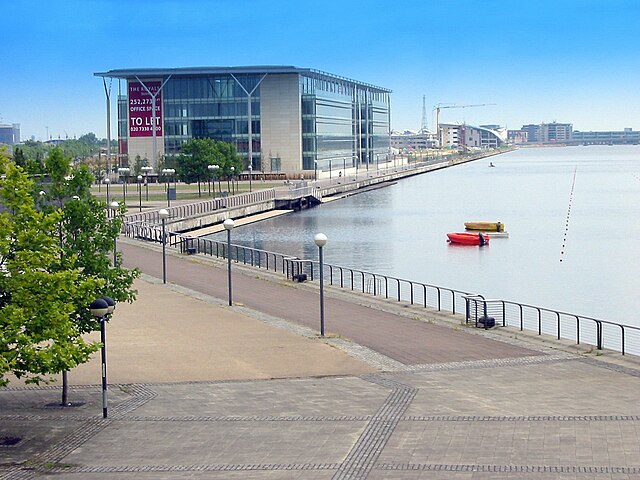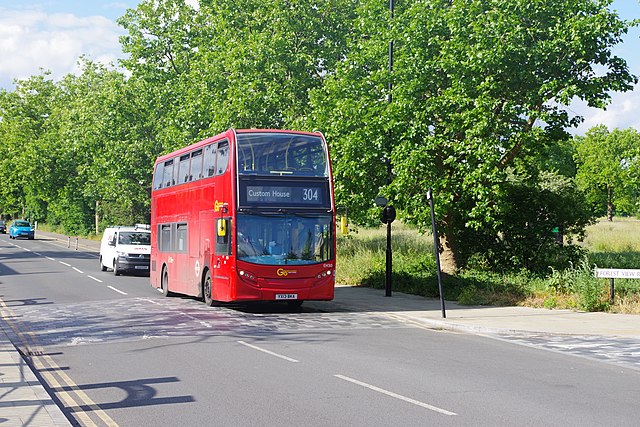East Ham is a district of the London Borough of Newham, England, 8 miles (12.8 km) east of Charing Cross. Within the boundaries of the historic county of Essex, East Ham is identified in the London Plan as a Major Centre. The population is 76,186.
East Ham Town Hall, on the Barking Road
University of East London student accommodation beside the Royal Albert Dock
The war memorial in East Ham, now a Grade II listed structure
The purpose-built Burton store in the High Street at East Ham
The London Borough of Newham is a London borough created in 1965 by the London Government Act 1963. It covers an area previously administered by the Essex county boroughs of West Ham and East Ham, authorities that were both abolished by the same act. The name Newham reflects its creation and combines the compass points of the old borough names. Situated in the Inner London part of East London, Newham has a population of 387,576, which is the fourth highest of the London boroughs and also makes it the 26th most populous district in England. The local authority is Newham London Borough Council.
Newham Town Hall in East Ham (E6)
Building 1000 – Newham Council Headquarters
London City Airport is in Newham
Bus route 304 in Manor Park, Newham (June 2022)








